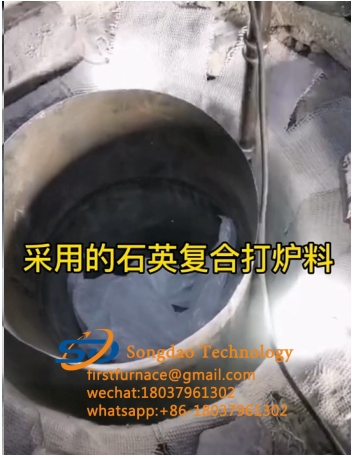- 23
- Feb
Kako zavezati dno indukcijske peći za topljenje
Kako zavezati dno indukcijske peći za topljenje
The thickness of the normal furnace bottom is about 200mm-280mm, and the sand is filled in two to three times to prevent uneven density everywhere during manual knotting, and the furnace lining after baking and sintering is not dense. Therefore, it is recommended that the thickness of the feed must be strictly controlled. Generally, the thickness of the sand filling is not more than 100mm/each time, and the furnace wall is controlled within 60mm. Multiple people are divided into shifts, 4-6 people per shift, and 30 minutes for each knot replacement. Rotate slowly around the furnace to change the position, with even force, so as not to cause uneven density.
Kada čvorovi na dnu peći dostignu potrebnu visinu, kalup za lončić se može postaviti struganjem. U tom smislu treba voditi računa da kalup za lončić bude koncentričan sa indukcijskom zavojnicom, podešen vertikalno gore-dolje, i da je oblik što je moguće bliže dnu izgrađene peći. Nakon podešavanja perifernog zazora da bude jednak, upotrijebite tri drvena klina za stezanje, a srednji uteg za podizanje se pritisne kako biste izbjegli zid peći. Pomicanje kvarcnog pijeska se javlja pri čvoru.

